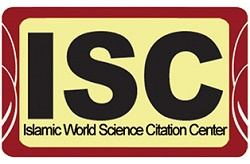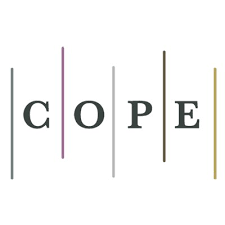The Impact of Income Inequality on the Level of Community Health and Economic Development in Iran
DOI:
https://doi.org/10.52547/ijimes.1.2.64DOR:
https://dorl.net/dor/20.1001.1.27832678.2021.1.2.6.8Keywords:
Income inequality, community health, economic development, life expectancyAbstract
Purpose Given that health is one of the categories that is directly and indirectly affected by income inequality in the country. In this study, the effect of income inequality and economic development on the level of life expectancy as a health indicator is examined.
Methodology: This article is an analytical and ecological correlation type using the time series data of 2002-2019 to study the variables of Gini coefficient, per capita income, GDP and life expectancy in Iran. For this purpose, the regression test approach has been used. SPSS software was used to analyze the data.
Findings: According to the results, the significant value of regression is less than 0.05, so regression is significant. The standard beta value for the Gini coefficient is negative 0.367 and the significant value is 0.005, so the Gini coefficient at the 95% confidence level has a negative and significant effect on life expectancy. The standard beta coefficient for national per capita income is 0.783 and a significant value is 0.001. Therefore, national per capita income at the 95% confidence level has a positive and significant effect on life expectancy. In the variable Gini coefficient and national per capita income, more than 81% explain the changes in life expectancy.
Originality/Value: The results show that health is more affected by income inequality than any other variable. There is also a significant relationship between income inequality and health indicators and reducing inequality and increasing economic development has a positive relationship with health. In this regard, one of the key ways Achieving this is improving the components of human capital, including health. Therefore, adopting appropriate policies to improve income distribution can be effective in promoting the health of people in society and consequently in developing societies such as Iran, simultaneous attention to economic development and income distribution is the best strategy to ensure and promote health.
Downloads
References
Panahi, H., & Aleemran, S. A. (2016). The Effect of inflation, health expenditure and urbanization on life expectancy in the Middle East and North Africa Countries (MENA). Payesh (Health Monitor), 15(4), 346-351. DOI: 20.1001.1.16807626.1395.15.4.1.7
Babakhani, M. (2009). Relationship between economic growth, income inequality and health in Iran: 1978-2006. Iranian Journal of Epidemiology, 5(1), 9-16.
Preston, S. H. (2007). The changing relation between mortality and level of economic development. International journal of epidemiology, 36(3), 484-490. https://doi.org/10.1093/ije/dym075
Nahaei, V. S., & Bahrami, M. (2021). Uncertainty analysis of business components in Iran with fuzzy systems: By comparing hypermarkets and Net markets. International Journal of Innovation in Management, Economics and Social Sciences, 1(1), 45-55. https://doi.org/10.52547/ijimes.1.1.45
Ghahremani Nahr, J., & Bathaee, M. (2021). Design of a Humanitarian Logistics Network Considering the Purchase Contract. Journal of Decisions and Operations Research. DOI: 10.22105/dmor.2021.270988.1311
Mustafa, U., & Mir, M. A. (1999). Sustaining economic development by reforming basic institutions through community participation. The Pakistan Development Review, 1233-1246.
Nozari, H., Najafi, E., Fallah, M., & Hosseinzadeh Lotfi, F. (2019). Quantitative analysis of key performance indicators of green supply chain in FMCG industries using non-linear fuzzy method. Mathematics, 7(11), 1020. https://doi.org/10.3390/math7111020. https://doi.org/10.3390/math7111020
Ghodsi Rad, H. R., & Sarokhani, B. (2020). The Effect of Economic Development on Social Inequality in Tehran Metropolis. Journal of Iranian Social Development Studies, 12(45), 7-21.
Taheri, E., Sadeghi, H., Agheli, L., & Naseri, A. (2019). Modelling the Economic and Welfare Effects of Expanding Health Sector and Sickness Reduction in Iran (CGE Approach). Quarterly Journal of Economic Growth and Development Research, 10(37), 33-50. DOI: 10.30473/egdr.2019.46749.5229
Mirjalili, S. H., Abbaszadeh, M., & Moradkhani, N. (2020). Investigating the Relationship between Income and Women's Health (Case study of female staff of Zanjan University). Sociological Cultural Studies, 10(4), 105-123. DOI: 10.30465/scs.2020.4947
Mohammadzadeh, Y., Taghizadeh, N., & Nazariyan, E. (2017). Income Inequality, Poverty and Public Health.
Heidari, H., & Salehiyan Salehi Nejad, Z. (2014). Income inequality as a threat for Public health: reinvestigation of income distribution and health nexus with a new approach. Social Welfare Quarterly, 14(53), 7-36.
Barfar, E., Faramarzi, A., Khanijahani, A., Alizadeh, S., & Ashrafi, A. (2014). Investigation of the Relationship between Health and Economic Indicators in Selected Countries, 2004-2011.
Abdolmaleki, H., & Mahdavi, M. (2013). Analyzing the Effect of Health Indices on the Regional Development in Iran; Econometric Approach of Combined Data. Bioethics Journal, 3(8), 11-42.
Ghanbari, A., Nikravan, A., & Fattahi, M. (2011). Income inequality and population health: evidence from panel data analysis. Journal of Health Administration, 14(45), 77-86.
Lotfalipour, M. R., Zabihi, A., & Shabani, M. A. (2011). The Impact of Restructuring on Efficiency of the Iran’s Electricity Industry. Monetary & Financial Economics, 17(32).
Pickett, K. E., & Wilkinson, R. G. (2015). Income inequality and health: a causal review. Social science & medicine, 128, 316-326. https://doi.org/10.1016/j.socscimed.2014.12.031
Kino, S., & Kawachi, I. (2020). How much do preventive health behaviors explain education-and income-related inequalities in health? Results of Oaxaca–Blinder decomposition analysis. Annals of epidemiology, 43, 44-50. https://doi.org/10.1016/j.annepidem.2020.01.008
Lahouij, H. (2017). The effects of income inequality on economic growth evidence from MENA countries.
Bakkeli, N. Z. (2016). Income inequality and health in China: a panel data analysis. Social Science & Medicine, 157, 39-47. https://doi.org/10.1016/j.socscimed.2016.03.041
López, D. B., Loehrer, A. P., & Chang, D. C. (2016). Impact of income inequality on the nation's health. Journal of the American College of Surgeons, 223(4), 587-594. https://doi.org/10.1016/j.jamcollsurg.2016.07.005
Lahelma, E., Laaksonen, M., Martikainen, P., Rahkonen, O., & Sarlio-Lähteenkorva, S. (2006). Multiple measures of socioeconomic circumstances and common mental disorders. Social science & medicine, 63(5), 1383-1399. https://doi.org/10.1016/j.socscimed.2006.03.027
Qi, Y. (2012). The impact of income inequality on self-rated general health: Evidence from a cross-national study. Research in Social Stratification and Mobility, 30(4), 451-471. https://doi.org/10.1016/j.rssm.2012.07.002
Ogloblin, C. J. A. E. (2011). Health care efficiency across countries: a stochastic frontier analysis. Applied Econometrics and International Development, 11(1), 5-14.
Deaton, A. (2003). Health, inequality, and economic development. Journal of economic literature, 41(1), 113-158. DOI: 10.1257/002205103321544710
Preston, S. H. (1975). The changing relation between mortality and level of economic development. Population studies, 29(2), 231-248.
Meskarpour-Amiri, M., & Mehdizadeh, P. (2020). Trend analysis of Iran’s macroeconomics main variables and its impact on health indicators. Iran J Health Insur, 2(4), 206-215.
Published
How to Cite
Issue
Section
License
Copyright (c) 2021 faezeh ostadi, Seyed Kamal Sadeghi

This work is licensed under a Creative Commons Attribution 4.0 International License.












